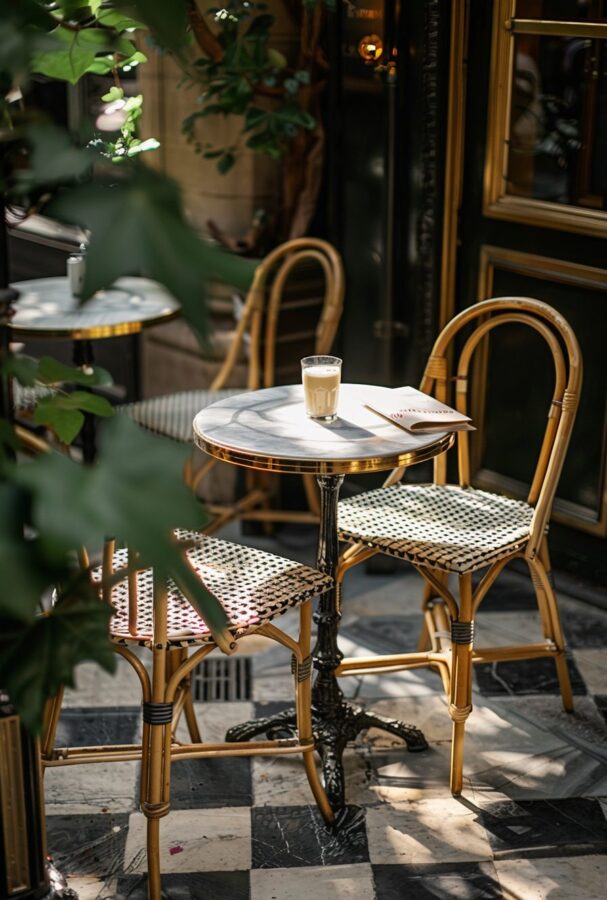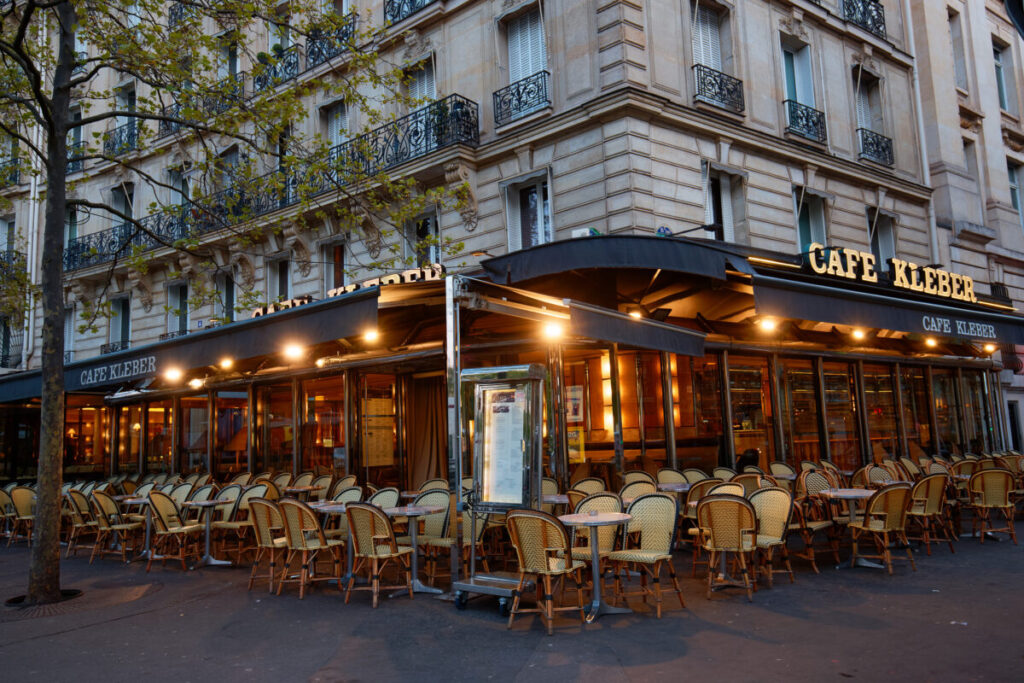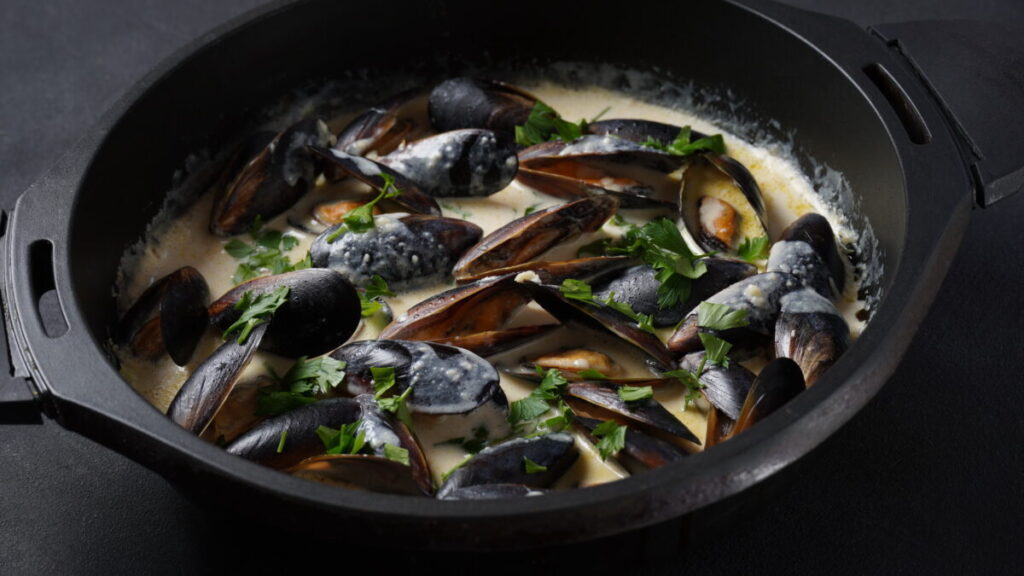A full bistro restaurant embodies the quintessence of French dining culture, offering a mingle of simplicity and charm wrapped in a historical embrace. These small, modest eateries originated in Paris, swiftly earning their place at the heart of local life and gastronomy. With origins traced back to landlords providing boarding and food for travelers, the evolution of the bistro reflects a rich tapestry of communal life, where food and fellowship converge.
Characterized by a casual and convivial atmosphere, bistros serve moderately priced meals ranging from classic French dishes to contemporary cuisine. In these cozy establishments and cafes, one might find the day’s offerings written on a chalkboard menu, inviting regulars and tourists alike to enjoy a taste of French culinary delight. The essence of a bistro extends beyond the menu; it is how each guest is steeped in an intimate, friendly setting, often accompanied by a thoughtful selection of wines.

The allure of bistros lies not only in their savory fare but also in their cultural significance. These establishments were, and still are, social hubs where artists, intellectuals, and neighbors could gather, all united by the love of good food and lively conversation. Embracing the Parisian penchant for joie de vivre, bistros remain emblematic of the city’s dining scene, where tradition proudly meets the casual ease of modern life.
Table of Contents
- Historical Origins of Bistros
- Napoleonic Influence
- Evolution in France
- Bistro Versus Brasserie
- Defining the Bistro
- Understanding Brasseries
- Characteristics of a Bistro
- Atmospheric Qualities
- Furniture and Layout
- Menu and Cuisine
- Signature Bistro Fare
- Popular Dishes
- Wine and Beverages
- Bistros Around the World
- New York City Bistros
- The Spread to Other Cultures
- Modern Day Bistro Experience
- Indoor and Outdoor Settings
- The Bistro as a Neighborhood Staple
Historical Origins of Bistros
Bistros hold a cherished spot in culinary history, intertwining with French tradition and even the echoes of the Napoleonic era. They have evolved from humble beginnings to become integral to the Parisian—and indeed global—dining scene.
Napoleonic Influence

During the Napoleonic wars, Russian soldiers were said to have brought their demand for quick service to Parisian establishments, allegedly shouting “bystro!”—Russian word for “quickly!”—which is believed by some to have influenced the term bistro. A plaque in Paris humorously attributes this etymology to an incident at La Mère Catherine, a historical Parisian eatery. However, this origin story is part of legend rather than confirmed fact.
Evolution in France

As the 19th century progressed, these modest restaurants became a fabric of French society, especially in Paris. The classic Parisian bistro emerged as a small, simple venue where approachable yet high-quality meals were the norm.
Their focus was on serving delicious, affordable dishes within a casual atmosphere, a tradition that bistros proudly carry on. As urban life thrived, the bistro became a cornerstone where locals could indulge in French food and fare, often forming the stage for dynamic cultural exchanges and the free flow of ideas amongst intellectuals, artists, and workers alike.
See Related: The Current of History – Visit along the Seine
Bistro Versus Brasserie

The bustling streets of Paris are dotted with dining establishments that embody cultural sophistication and simplicity. The quintessential French restaurant or bistro offers an intimate dining experience, while the more spacious brasserie provides a lively atmosphere often accompanied by its beer-brewing origins.
Defining the Bistro

A French bistro is characterized by its small size and a cozy environment. It’s a place where one can savor home-style cooking with bistro definition rooted in convenience and comfort. Historically, bistros gained popularity in Paris as simple establishments providing apartment dwellers meals similar to those they’d enjoy at home.
Patrons at a bistro are encouraged to relax and linger over their meals, relishing both food and conversation in a tranquil setting. Bistros tend to maintain particular hours, typically serving lunch and dinner with a pause in between.
Understanding Brasseries

The term brasserie translates to ‘brewery,’ highlighting its heritage as a place where beer was indeed brewed. These large, informal brasserie restaurants are known not just for their extensive drink menus but also for serving a variety of hearty Alsatian dishes. The brasserie meaning has evolved, but these establishments remain cornerstones of French culinary culture, often buzzing with energy from morning until night.
They are known for being open all day, setting them apart from the more time-restricted bistros. The brasserie emerged as a social hotspot where the fusion of food, drink, and jovial company encapsulates the French spirit of ‘joie de vivre.’
Characteristics of a Bistro
Bistros are woven into the fabric of Parisian dining culture, offering an experience that artfully combines comfort with gastronomy. These establishments are adored for their unpretentious charm and exceptional food, tailored to create a warm, inviting experience reflective of historic Parisian life.
Atmospheric Qualities

Historically, the bistro has been a space where the ambiance is as important as the food. They typically exude a cozy atmosphere with a casual touch, encouraging diners to relax as if they were in their own dining rooms. The lighting is often soft, casting a warm glow that complements the buzz of conversation—a throwback to the days when Parisian artists and intellectuals would debate and create within these spirited walls.
Furniture and Layout

The bistro furniture is selected for style and function, evoking a sense of traditional French dining. A quintessential element is the “Paris bistro table,” usually round and small, encouraging close seating and intimate conversation.
Seating arrangements are often close-knit, contributing to the friendly, communal feeling that bistros are known for. Traditional wooden chairs or banquettes line the dining space, inviting customers to sit and stay awhile.
Menu and Cuisine

Bistros pride themselves on serving a menu peppered with small dishes, overflowing with French culinary tradition. Simple yet flavorful, the cuisine of own bistro is usually based on seasonally available ingredients, prepared in a style passed down through generations. It’s not uncommon for bistros to have a limited menu that emphasizes quality over quantity, often featuring traditional French staples that have become beloved far beyond the borders of France.
See Related: Food Tour in Paris – Montmartre District
Signature Bistro Fare
Bistros are renowned for their simple yet delectable offerings that embody the essence of traditional French cuisine together, contributing to a unique and intimate dining experience.
Popular Dishes

The quintessential bistro menu features an array of comfort foods, each carrying a piece of French culinary history. Coq au vin, a beloved traditional dish, marries chicken with wine, mushrooms, and lardons, telling the tale of provincial France’s resourcefulness.
Another staple of a typical restaurant, beef bourguignon, highlights the regional flavors of Burgundy with its slow-cooked, wine-infused beef stew. Patrons may also find ratatouille gracing the menu, showcasing the vibrant produce of the French Riviera in a hearty vegetable dish that has warmed the hearts of locals and travelers alike.
For something lighter, a classic Nicoise salad—composed of tuna, hard-boiled eggs, olives, and anchovies—offers a refreshing taste of French coastal dining. Bistros often serve croque-monsieur, a delectably toasted sandwich served with ham and cheese, perfect for a leisurely lunch alongside the Seine.
Wine and Beverages

The drink selection is as integral to the bistro experience as the food, focusing on wine that complements the flavors of the dishes. A curated wine list word bistro often features regional specialties, inviting diners to embark on a sensory journey through the vineyards of France. From the crisp white wines of the Loire Valley to the full-bodied reds of Bordeaux, bistros take pride in pairing each dish with the perfect glass.
Nonetheless, a bistro’s charm also extends to its selection of other beverages. For instance, pastis, an anise-flavored aperitif, harkens back to the sunny terraces of Marseille, setting the tone for an indulgent meal. Not to be overlooked, the quintessential French café—a robust espresso—serves as both a welcoming introduction to neighborhood restaurants and a satisfying epilogue to the bistro dining narrative.
Bistros Around the World

The humble bistro, with its roots firmly planted in Parisian culture, has made a charming voyage across the globe. Each city it graces, bistros adapt to local flavors while retaining a hint of their French origins.
New York City Bistros

In the bustling streets of New York City, bistros have found a special place amidst the urban restaurant landscape. These establishments offer New Yorkers a taste of Parisian culinary simplicity coupled with the cosmopolitan flair of the city. Le Coucou and Balthazar stand as testaments to the enduring appeal of the classic French bistro, with their intimate atmospheres and menus boasting a fusion of the traditional and the innovative.
Historically, some of the most renowned NYC bistros were spearheaded by chefs who brought their Parisian savoir-faire to the American dining scene, infusing it locally inspired dishes with a local twist. These bistros have a lasting influence, cultivating a love for French cuisine enmeshed with New York’s gastronomic identity.
The Spread to Other Cultures

The bistro’s journey didn’t stop at the Atlantic; it has touched shores far and wide. They beautifully exemplify the global influence of French dining, as these cozy eateries surface in cities around the world, from Tokyo to Buenos Aires. In each locale, they retain a certain je ne sais quoi—whether it be the Parisian charm or the casual and welcoming spirit that originally defined the bistros of Paris.
Interestingly, bistros in different cultures incorporate local ingredients and culinary techniques to serve food, creating a delightful symphony of flavors. They stand as cultural interpreters, presenting local diners with an accessible and often affordable way to experience a taste of French dining while celebrating their culinary heritage.
See Related: Paris Private Food Tasting Tour with a French Gastronomy Expert
Modern Day Bistro Experience
Embracing the essence of French dining, the bistro offers an intimate haven for food and community. Famed for their small-scale charm, these establishments cater to a modern palate while still nodding to their historical roots.
Indoor and Outdoor Settings

Bistros typically embrace their neighborhood charm by providing warm indoor settings that foster intimate conversations and gatherings. Rustic furniture often pairs with ambient lighting to create a casual yet inviting atmosphere.
Historically, Parisian bistros stemmed from the need for simple, hearty meals during the Napoleonic era. The small, popular establishments continued to thrive, evolving into cherished eateries that embody the spirit of Parisian life.
Outdoor bistros boast quaint sets on sidewalks or patios, allowing guests to enjoy their meals al fresco. These outdoor areas serve as an extension of community life, blurring the lines between public thoroughfare and private feasting. Whether sipping a coffee or enjoying a leisurely meal, the outdoor bistro setting is a testament to the city’s joie de vivre.
The Bistro as a Neighborhood Staple

In many communities, a bistro is a neighborhood staple, mixing the convenience of proximity with the allure of local flavor. Bistros are more than just eateries serving meals; they serve as venues for social interaction, reflecting the cultural tapestry of their surroundings. They are integral to city life, where the daily bustle often convenes over a shared love for simple, well-crafted meals.
A bistro’s role in fostering community can be traced back to when French artists and intellectuals convene within these cozy walls, debating and shaping the zeitgeist of their age. Today, they continue to be cherished hubs where new friendships are formed, and old ones are nurtured, all under the delightful aromas of French cuisine.
Related Resources
- Food and wine tour in Montmartre
- Montmartre Hill Sweet & Savory French Gourmet Food & Wine Tasting Tour
- Paris Christmas Gourmet Food Tasting Walking Tour
Please rate this post

